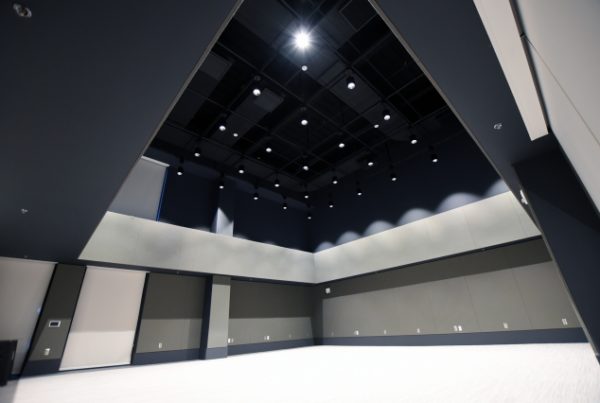Suzanne Day | Office of Open Learning | December 20, 2019
Abstract
Exploring hip hop history with art and technology
With its centerpiece exhibit for the forthcoming Universal Hip Hop Museum, an MIT team uses artificial intelligence to explore the rich history of hip hop music.
A new museum is coming to New York City in 2023, the year of hip-hop’s 50th birthday, and an MIT team has helped to pave the way for the city to celebrate the legacy of this important musical genre — by designing unique creative experiences at the intersection of art, learning, and contemporary technology.
With “The [R]evolution of Hip Hop Breakbeat Narratives,” a team led by D. Fox Harrell, professor of digital media and artificial intelligence and director of the MIT Center for Advanced Virtuality, has created an art installation that takes museum-goers on an interactive, personalized journey through hip hop history.
The installation served as the centerpiece of an event held this month by leaders of the highly anticipated Universal Hip Hop Museum (UHHM), which will officially open in just a few years in the Bronx — the future home of the UHHM, and where many agree that the genre of hip hop music originated.
“Hip hop is much more than a musical genre. It is a global phenomenon, with a rich history and massive social and cultural impact, with local roots in the Bronx,” Harrell says. “As an educational center, the Universal Hip Hop Museum will have the power to connect people to the surrounding community.”
Harrell’s immersive art installation takes museum-goers on a journey through hip hop culture and history, from the 1970s to the present. However, not everyone experiences the installation in the same way. Using a computational model of users’ preferences and artificial intelligence technologies to drive interaction, the team of artists and computer scientists from the Center for Advanced Virtuality has created layered, personalized virtual experiences.
When approaching the exhibit, museum-goers are greeted by “The Elementals,” or novel characters named after the five elements of hip hop (MC, DJ, Breakdance, Graffiti Art, and Knowledge) that guide users and ask key questions — “What is your favorite hip hop song?” or “Which from this pair of lyrics do you like the most?” Based on those answers, the Elementals take users through their own personalized narrative of hip hop history.
Harrell developed the Elementals with professors John Jennings of the University of California at Riverside and Stacey Robinson of the University of Illinois — artists collectively known as Black Kirby. This visual aesthetic ties the work into the rich, imaginative cultures and iconography of the African diaspora.
Through these conversations with the Elementals they encounter, people can explore broad social issues surrounding hip hop, such as gender, fashion, and location. At the end of their journey, they can take home a personalized playlist of songs.
“We designed the Breakbeat Narratives installation by integrating Microsoft conversational AI technologies, which made our user modeling more personable, with a music visualization platform from the TunesMap Educational Foundation,” Harrell says.

![Director of “The [R]evolution of Hip Hop Breakbeat Narratives”](https://foxharrell.wpengine.com/wp-content/uploads/2020/05/mit-hip-hop-museum-breakbeat-narratives_0.jpg)


